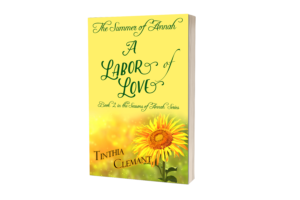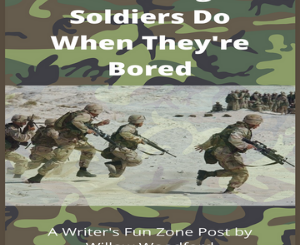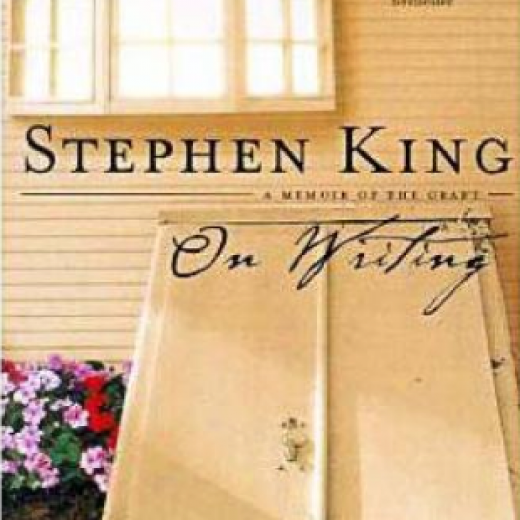Scenes: The Puzzle Pieces of Your Story by Tinthia Clemant
 Let’s welcome back monthly columnist Tinthia Clemant as she shares with us: “Scenes: The Puzzle Pieces of Your Story.” Enjoy!
Let’s welcome back monthly columnist Tinthia Clemant as she shares with us: “Scenes: The Puzzle Pieces of Your Story.” Enjoy!
***
I love to build puzzles. I love the challenge of sorting through a pile of mismatched shapes and colors…
…and ultimately arriving at a cohesive image.
Writing a story is very similar to building a puzzle.
 Just as the picture on a puzzle box tells us what the puzzle will look like…authors start with an image in their minds of what the story will be about.
Just as the picture on a puzzle box tells us what the puzzle will look like…authors start with an image in their minds of what the story will be about.
This is called the premise.
 A premise is the “What if?” question.
A premise is the “What if?” question.
See if you can figure out what stories I’m referring to by these three premises.
Hint: these are books, not movies.
- What if a man, upon seeing an old photograph of a beautiful woman, travels back in time to meet her?
- What if a young boy discovers he’s a wizard and that there’s a dark force trying to kill him?
- What if an orphan boy was given a fortune by an unknown benefactor?
No, I’m not going to give you the answers, you’ll have to do a little digging. Message me when you think you know the book titles and I’ll let you know if you’re correct.
Opening the Box: Story Scenes
 Yup, your story’s scenes are like puzzle pieces, and if you’re a panster like me, they’re all jumbled together into a pile of chaos in your brain.
Yup, your story’s scenes are like puzzle pieces, and if you’re a panster like me, they’re all jumbled together into a pile of chaos in your brain.
Plotters? Well, their puzzle pieces are neatly arranged by color, shape, pattern, etc.
Oh, to be a plotter.
And just like the pieces to our puzzle, miss one or two scenes and you’ll have holes in your story.
Too many scenes equals chaos
Add too many scenes and you’ll have chaos.
I recently read a newly published women’s fiction novel by a very successful author whom shall remain nameless and found that while reading I could skip entire paragraphs and keep the thread of the story.
Truly, I didn’t need to know the thread count of the sheets the character was sleeping on, or that she had to stop for gas on her way to her location.
Trust me, nothing happened at the gas station. Nothing! These scenes were used as filler to increase the book’s word count.
Key Question to Ask About Each of Your Scenes
In my next post I’ll discuss the scenes that absolutely must be in your story.
For now, I want you to go through your manuscript and ask yourself this question for each and every scene in your story:
Does this scene propel the plot forward?
If you’re not sure, place that scene aside.
If you think the story is easily told without the scene, even if the scene represents some of your best writing, remove it.
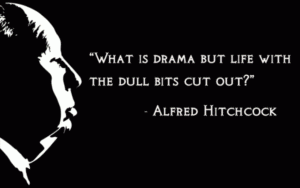 Consider what Alfred Hitchcock is quoted as saying:
Consider what Alfred Hitchcock is quoted as saying:
Cut out the dull bits and you’ll have a smashing story, just like our puzzle when we don’t try to force the extra pieces that make their way into the box.
Happy writing!
ABOUT THE AUTHOR
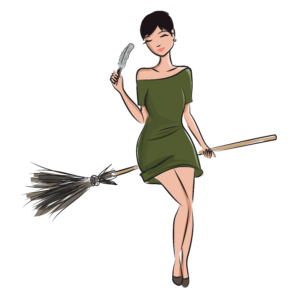 Author of The Summer of Annah series, Tinthia Clemant lives in a secluded spot on the Concord River in Massachusetts. Her companions include a black Labrador/Coonhound named Harlee; Shadow, an elderly black cat who still rocks at catching mice that have wandered into the house; a few hundred wild Mallards; assorted turtles, songbirds, snakes; and hawks, two Great Blue herons, and an American bald eagle.
Author of The Summer of Annah series, Tinthia Clemant lives in a secluded spot on the Concord River in Massachusetts. Her companions include a black Labrador/Coonhound named Harlee; Shadow, an elderly black cat who still rocks at catching mice that have wandered into the house; a few hundred wild Mallards; assorted turtles, songbirds, snakes; and hawks, two Great Blue herons, and an American bald eagle.
Besides writing, she enjoys baking, gardening, reading (of course), painting and photography, laughing, and movies (the more explosions the better). Tinthia is an ice cream aficionado and insists that Ben and Jerry are the most perfect men ever created. She inherited my father’s temper and her mother’s view on life: It’s meant to be lived, embraced, savored, inhaled, and not given back until every last drop of wonder is claimed. If you visit Tinthia, make sure you bring a bottle of bourbon and, of course, ice cream. Her favorite flavor is Chunky Monkey.


